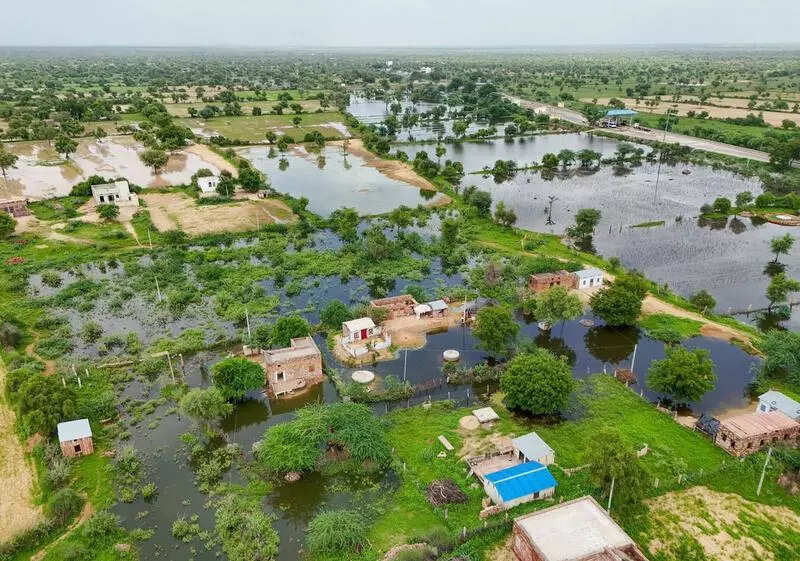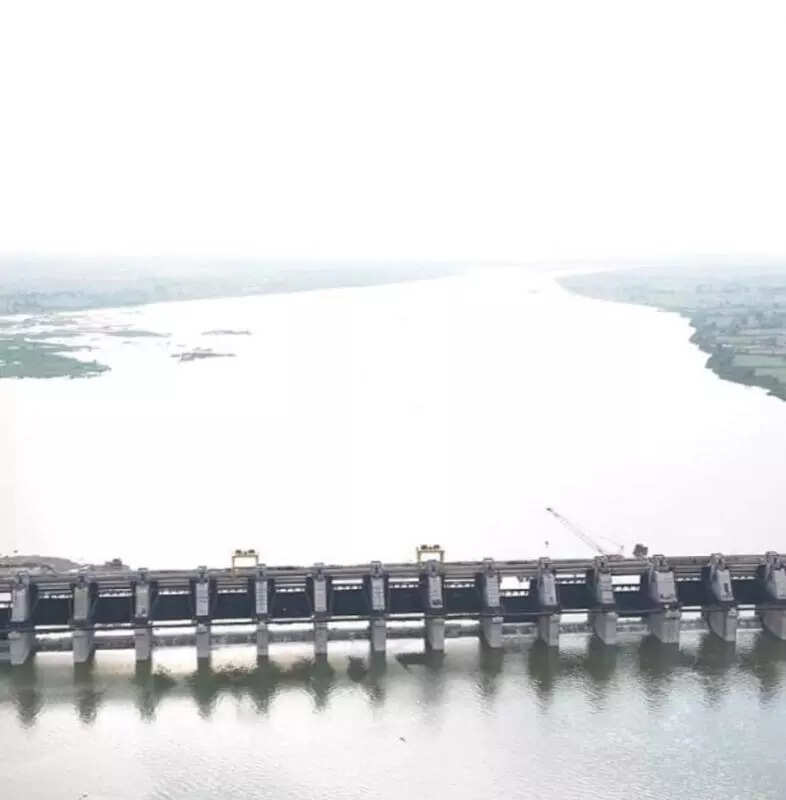Edited 303Jaisalmer: Kalyanpur panchayat samiti in Balotra district Monday issued a notice to residents of Araba Purohitan village to leave immediately after rainwater mixed with chemical waste from textile factories inundated homes, schools, and fields. About 300 people living in 50 houses in Araba Purohitan are now relocating to govt buildings and fields outside the flood zone, carrying essentials like food, bedding, and utensils. The move has been difficult, especially for families with children and elderly members. Narpat Singh Rajpurohit, a former sarpanch, said the problem of chemical effluents flooding the village during rainy season has persisted for years, but authorities have failed to address it. For over 16 years, no drains have been constructed to divert the polluted water, he said.Similar conditions prevail in neighbouring villages such as Doli, where homes remain submerged in chemically contaminated water. The pollution, mainly from illegal textile units operating along the Jojari River, has devastated agriculture and rendered fertile land barren. Villagers allege these factories discharge chemical waste into the river with the collusion of local officials and the pollution control board. Official records show that the water flow path of the Jojari River beyond Araba has been converted into fields, worsening the flooding.During the rainy season, water levels rise up to two-and-a-half feet in residential areas, forcing repeated evacuations. Last year, several homes in Araba Dudawata were flooded. The impact extends to villages like Kalyanpur, Charlai, and Sarwadi, where farmland is also becoming infertile.Local leaders say the Jojari River, once a vital water source, now brings chemical-laden water that contaminates ponds and wells. Over a dozen ponds and several public wells have been lost, and traditional water sources are at risk. Environmental activists report that pastures and agricultural land have become barren, trees and vegetation have died, and wildlife populations are declining.
Balotra village flooded with toxic water, residents told to evacuate | Jaipur News





